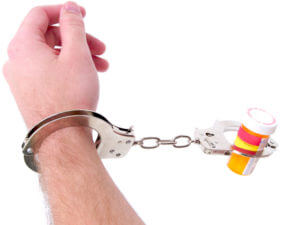Someone dies from an opioid overdose every 2 minutes in the USA. That’s a fact you can’t ignore.
Opioid abuse has been increasing across the world for years, and America has become the center of this drug crisis. A large part of this is due to prescribed medications causing addictions, meaning that anyone could become at risk.
If you or someone you know suffers from addiction, it’s important you have all the information to help fight it. From signs of opioid abuse to symptoms of an overdose, knowledge can save lives.
This guide details everything you need to know about opioid abuse so we can overcome the problem together.

What Are Opioids?
Let’s start by identifying what opioids actually are. They can both be natural — like opium from poppies — and synthetic — like prescription medicine. They’re very strong painkillers that can also give feelings of euphoria.
The number one thing you need to know about opioids before taking them is that they’re highly addictive.
Some different opioids include:
- Heroin
- Codeine
- Fentanyl
- Hydrocodone
- Methadone
- Morphine
- Sufentanil
- Tramadol
Signs of Opioid Abuse
For anyone in recovery, the first step is always identifying that you have a problem. Whether you’re looking for yourself or someone you know, there are many opioid abuse symptoms you can check for.
First of all, if you think you can’t stop taking the drug or you’re increasing the amount you take, this is probably an addiction.
You can also look for other symptoms, such as fatigue, becoming easily agitated, and having frequent mood swings. Here’s a list of more of the most common opioid abuse symptoms:
- Lack of coordination
- A slower breathing rate
- Nausea that can lead to vomiting
- Becoming constipated
- Losing interest in responsibilities
- Sudden euphoria
- A shift in sleeping patterns
- Slurring speech
- Depression, anxiety, and a lack of motivation
If you think someone you know might be tackling an addiction, keep an eye on how they look. Often, addicts will stop taking care of their physical appearance.
Remember though, people can hide their symptoms very well. The best way to identify addiction is by talking to the person directly or seeking professional help.
Opioid Overdose Symptoms
Nearly half a million people in America have died from an opioid overdose since 2000.
To help bring those numbers down, it’s important we all know the symptoms of an opioid overdose. These include being unresponsive and having trouble breathing (slow, irregular, or not breathing at all).
The person’s pulse could have slowed or become irregular, or you may not be able to find a pulse at all. They may also pass out or vomit, and their pupils are likely to become a lot smaller.
If you see signs of an overdose — even if you’re not 100% sure — please call 911 if you’re in America. For other countries, call your emergency ambulance service.
If you or someone you know is at risk, you can also get a nasal spray. It’s called naloxone, or Narcan, and it’s used during an overdose. Talk to your doctor if you need one — it may save a life.
Opioid Withdrawl
If you become dependant on opioids, the way your body functions changes. These usually lead to withdrawal symptoms when you stop taking the drug. These symptoms are very unpleasant and can make it hard to quit.
Withdrawal symptoms can include:
- Nausea
- Vomiting
- Sweating and/or chills
- Shaking
- Pain
- Diarrhea
- Insomnia and fatigue
Opioid Addiction Statistics
To give you a better idea of the scale of the opioid problem, here are some statistics:
- In 2017, 1,300 young adults every day misused a prescribed opioid for the first time.
- In 2016, pharmacies prescribed over 200 million opioid prescriptions.
- In 2018, 32.5% of American students said that opioids were easily available to them.
- In 2018, over 60,000 people died from drug overdoses, including those caused by prescription opioids.
We can change this, but we all need to work together. No one is born to be an addict, and we believe everyone can recover with the right help.
How Can You Get Help for Opioid Addiction?
The first step to recovery is by getting a diagnosis from your doctor. They’ll be able to diagnose your addiction and can then provide help.
You might be prescribed methadone, buprenorphine, or Naltrexone.
But, there’s more to recovery than medication. It’s about resetting your mindset. You need to rid yourself of old, negative behavior patterns, and learn actionable coping mechanisms for life.
Support is also crucial to recovery. Whether that’s from friends and family, your partner, or your doctors, having a network of people to help you will make recovery easier. You can’t overestimate the need for support.
Let’s Start Your Recovery
At BioCorRx, we understand addiction. We also understand recovery.
With our team of trained experts, including behavioral therapists, we can help you or someone you love take their life back. We developed our program to cover all aspects of addiction recovery, reducing the chance of relapse.
Don’t let addiction win. Find out more about our program or call us with any questions on 888-993-1099.
If you see signs of opioid abuse in someone you know, help them get the treatments they need. You can contact us for help and advice. We know it can scary, which is why we’re here to help.
